2018 Projects
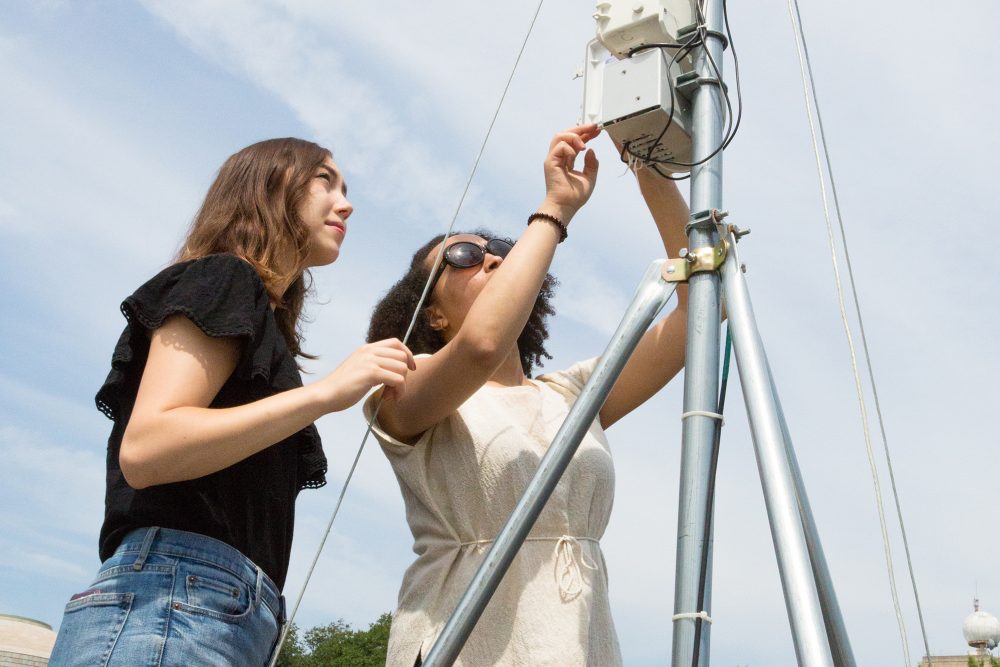

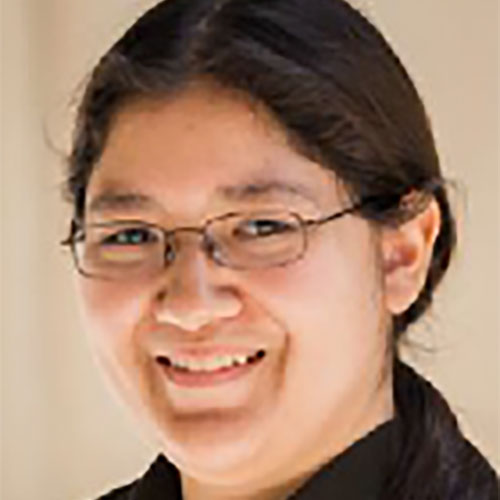 |
Rebecca Agustin ’19Electrical Engineering Advisor and Direct Supervisor: Steven Leeb, Professor, Electrical Engineering and Computer ScienceSponsor: Chevron Wireless data transfer for diagnostics of electromechanical systems The work I did this summer in the Research Lab of Electronics focused on constructing a portable device capable of gathering, processing, and displaying data collected from wireless sensors using the Internet of Things (IoT). These sensors could be used to gather information, such as energy consumption or temperature, about an electromechanical device. While developing the software for the device, I experimented with the use of different wireless communication protocols in order to transfer data and created an intuitive user interface that would allow for the addition of new functions to the device over time. We plan to also use the device as a teaching tool for learning about various IoT applications through software and hardware additions to the device. I hope to continue working on this project over the next year. |
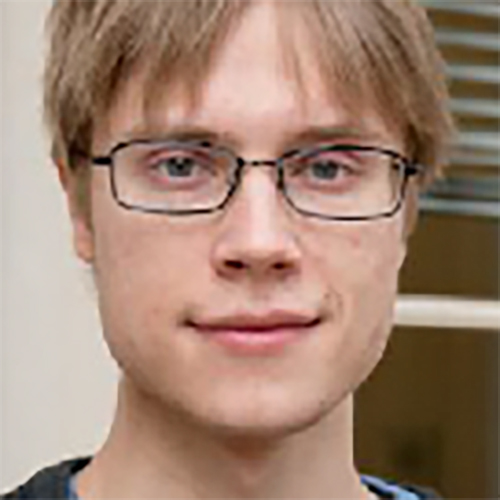 |
Alexander Alabugin ’20Chemistry Advisor: Yogesh Surendranath, Paul M. Cook Career Development Associate Professor, ChemistryDirect Supervisor: Corey Kaminsky, Graduate Student, ChemistrySponsor: Jerome I. ’51 ScD ’56 and Linda Elkind Graphite-conjugated porphyrins for efficient oxygen reduction The absence of platinum-free electrocatalysts that efficiently reduce oxygen to water limits the viability of low-temperature hydrogen fuel cells, constraining their power output and manufacturing costs. Over IAP 2018, I worked on an enhanced oxygen reduction electrode consisting of a molecular catalyst (an iron porphyrin) covalently bound to conductive carbon, allowing efficient delivery of electrons. My strategy drew direct inspiration from the biochemistry of cellular respiration; in mitochondria, iron heme porphyrins are essential to oxygen reduction by the enzyme cytochrome C oxidase. In pursuit of this novel electrocatalyst, I synthesized an asymmetric iron porphyrin and determined its structure by mass spectrometry in preparation for attaching it to the carbon surface. |
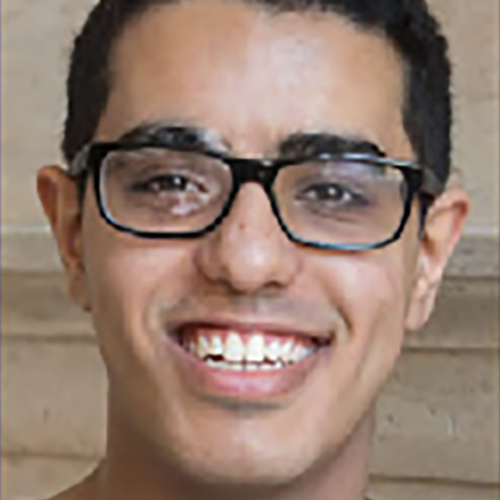 |
Ebrahim Al Johani ’19Physics, Electrical Engineering and Computer Science Advisor: Rajeev Ram, Professor, Electrical Engineering and Computer ScienceDirect Supervisor: Amir Atabaki, Research Scientist, Research Laboratory of ElectronicsSponsor: Shell International NIR silicon photodetector enhancement using photonic crystal cavity resonators During my summer in the Physical Optics and Electronics Laboratory, I worked on characterizing microscale infrared detectors that act as pixels on a camera. Current infrared cameras are extremely expensive, more than 10,000 dollars. The method developed in our lab replaces the most expensive component in the fabrication cost with a more scalable, low-cost process. I worked on finding the structure that provided the most efficient energy conversion (optical-to-electrical) among 1,088 devices on this new platform. Then, I simulated the high-performing devices in an electromagnetic solver (FDTD) in order to validate the experimental results and model the most optimized design. We found that the winning structure was 25 times more efficient than the non-optimized devices. This work presents a way to develop low-cost alternatives to the state-of-the-art infrared photodetectors. I learned a lot during the summer, and this was an experience I will remember as I progress to my graduate studies. |
 |
Wendy Bae ’20Mechanical Engineering Advisor: Leon Glicksman, Professor of Building Technology and Mechanical Engineering, ArchitectureDirect Supervisor: Nikhilesh Ghanta, Graduate Student, EngineeringSponsor: Shell International Optimization of thermal comfort in indoor workspaces Humans are one of the major sources of heat dissipation in an indoor space. As heat is dissipated from the human body, hot air is emitted and causes a change in density of its surrounding air. This natural plume may induce sinusoidal response in jet flow from air conditioners. This project involved mathematical modeling of the fluid interaction between jet streams of conditioned air and the buoyancy-driven hot air emanated from heat dissipation of humans. I simplified and simulated a complex air flow using a hot plate and a portable fan. I derived a very simplified model of the airflow using a momentum approach. I loved the aspect of diving into a completely new realm beyond the limits of textbooks or Google searches. I have grown to appreciate the beauty, hardships, and intricacies of research and thermodynamics. |
 |
Natasha Batten ’19Chemical Engineering Advisor and Direct Supervisor: Niall Mac Dowell, Director, Clean Fossil and Bioenergy Research Group, Imperial College LondonSponsor: Friends of MITEI UROP Economic analysis for reduction of levelized cost of electricity for carbon capture and sequestration utilization Climate change mitigation is one of the greatest challenges facing humanity in the 21st century. To address these challenges, we must develop new, cost-effective low-carbon energy technologies, such as carbon capture and sequestration (CCS) applied to existing thermal power plants. For my project, I developed a model to help determine how changing capital expenditures (CAPEX) and efficiency will impact the plant’s levelized cost of electricity (LCOE) with the addition of carbon capture. The current trend is to prioritize improvements in efficiency to offset the additional cost of CCS, but we discovered that the problem is more complex. Decrease in cost was plant dependent, based on location, plant type, fuel type, etc., and in some cases, it was more important to focus on decreasing the CAPEX in order to decrease the LCOE. I learned an immense amount about not only this particular project, but of my interest in low-carbon energy technologies. I am so grateful that I was able to conduct this research at Imperial with the support of MIT and the MIT Energy Initiative. |
 |
Chloe Blazey ’19Computer Science, Wellesley College Advisor: Christoph Reinhart, Professor, ArchitectureDirect Supervisor: Alpha Arsano, Graduate Student, ArchitectureSponsor: Shell International Climaplus Central cooling in buildings takes a considerable amount of energy. However, passive cooling strategies (when a building’s architecture and materials keep it at a comfortable temperature without any external cooling source) can help keep that amount down. I designed a web tool called Climaplus that runs simulations that encourage designers to use passive strategies in their designs. Climaplus runs its simulations on the cloud and is free to use by anyone with an internet connection. Our research team wanted Climaplus to stand apart from other simulation tools in a few ways. It needed to be easy to use and run efficiently while processing many simulation queries at the same time. As the technical lead on this project, I learned a lot about several aspects of the deployment process, including UX (user experience), backend, and frontend. The ability to take ownership over multiple parts of the project was a great experience for me. |
 |
Madeline Bundy ’21Chemical Engineering Advisor: Fikile Brushett, Associate Professor, Chemical EngineeringDirect Supervisor: Michael Orella, Graduate Student, Electrocatalytic hydrogenation of model biomass compounds Limited fossil fuels have presented a key societal issue over the past century by causing us to attempt high living standards with unsustainable resources. Electrochemical energy conversion presents a promising path forward, offering a way to use the energy generated from renewable sources, such as solar or wind. My research focused on upgrading model biomass compounds to highly-valued organic species through electrochemical hydrogenation. I focused on electrode design and how different weaves can affect absorption of compounds. Navigating chemical engineering’s many avenues is difficult, but this project has reassured me that energy and chemical engineering is my career path. |
 |
Antonio Buscemi ’20Chemistry Advisor: Tonio Buonassisi, Associate Professor, Mechanical EngineeringDirect Supervisor: Shijing Sun, Postdoctoral Associate, Photovoltaics Research LaboratorySponsor: Alfred Thomas Guertin ’60 The search for a lead-free solar panel: Accelerate materials development The most efficient solar panels currently in use often contain lead, a heavy metal that is neurotoxic and environmentally harmful. During my work for MIT’s Photovoltaic Lab, I fabricated and investigated thin films containing combinations of transition metals, alkali metals, and halides, which were then made into solar cells and tested. While I was unable to find any films that could perfectly replace those with lead, I helped narrow the list of viable thin films from 30 to 6, which accelerated the group’s continuing research into lead-free solar cells. This project helped me realize the necessity of teamwork to complete large projects and revealed ways I can apply the book knowledge gathered through my chemistry education toward creating tangible products. |
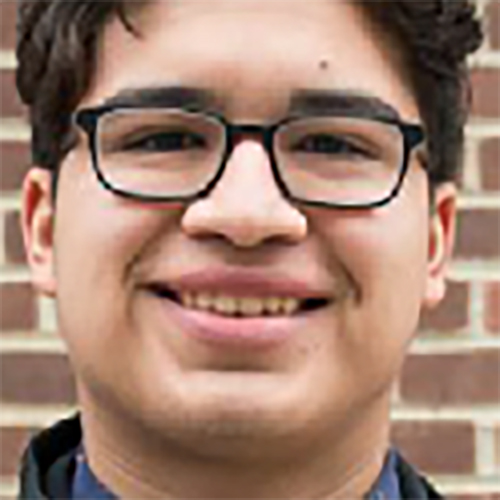 |
Alejandro Camacho ’21Electrical Engineering and Computer Science Advisor: John Lienhard, Director, Abdul Latif Jameel Water and Food Systems Lab; and Abdul Latif Jameel Professor of Water and FoodDirect Supervisor: Quantum Wei, Graduate Student, Mechanical EngineeringSponsor: Lisa Doh Himawan ’88 Energy efficiency of batch reverse osmosis Due to decreased rainfall and extended droughts, availability of fresh water is decreasing. Meanwhile our demand for water is increasing. One method of meeting this demand is reverse osmosis (RO), a process in which water is “pushed” through semi-permeable membranes, removing contaminants and larger particles. However, the traditional method (continuous RO) is not energy efficient. My team and I tested a prototype for an alternate method (batch RO) to examine its effectiveness and efficiency. My duties included conducting desalination experiments, troubleshooting and repairing the prototype, utilizing existing data to analyze the relationship between salinity and conductivity, and writing software to convert between the two. We found that batch RO effectively desalinated salt solutions at greater energy efficiencies than continuous RO. This fantastic experience allowed me to learn more about how research is conducted at the university level and to study something that I had never previously studied. |
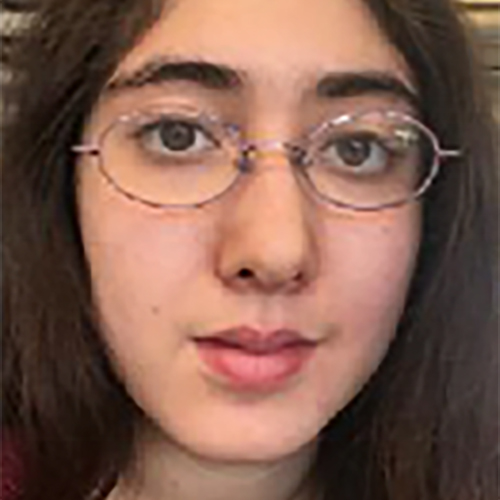 |
Elizabeth Chang-Davidson ’19Mechanical Engineering Advisor: A. John Hart, Associate Professor, Mechanical EngineeringDirect Supervisor: Alvin Tan, Graduate Student, Materials Science and EngineeringSponsor: Alfred Thomas Guertin ’60 Direct write self-assembly of functional colloidal materials The goal of this project was to develop a 3-dimensional printing technique capable of turning nanoparticles into solid structures that have order at the particle level. These structures have properties that are good for making tiny devices, including miniature LEDs and batteries. My role was to turn an existing 1-dimensional technique that used a needle to print nanoparticles into towers into a 3-dimensional technique. I selected a motor system that allowed the needle to move in 3 dimensions and then ran experiments to determine the optimal settings to produce ordered particles. I enjoyed learning about nanomaterials, an entirely new field to me, and working at a much smaller scale than I had before. Doing research as an undergraduate helped me decide that I want to go to graduate school and keep doing research. |
 |
Amanda Code ’20Chemistry Advisor: T. Alan Hatton, Ralph Landau Professor, Chemical Engineering; and Director, David H. Koch School of Chemical Engineering PracticeDirect Supervisor: Katherine Phillips, Postdoctoral Associate, Chemical EngineeringSponsor: ExxonMobil Synthesis of polymer and nanoparticle inks for electrochemically-mediated carbon capture My project this summer aimed to create materials for carbon capture devices for smokestacks that are both cheaper and easier to work into existing infrastructure. These devices capture the carbon dioxide via an electrochemical reaction. The materials for these devices are to be printed through an inkjet printer and therefore needed to fit the certain restraints involved with printing, namely size. To overcome these restraints, I synthesized very small silver particles to create a conductive base and conductive polymer composites to be involved in the carbon capture reaction. These materials show a promising start for use in the carbon capture devices. My experience this summer catalyzed tremendous growth for me scientifically, and I became much more intellectually independent. I also was exposed to many new scientific techniques I hope to be able to use in the future. I am incredibly grateful for this opportunity and would love to continue to explore scientific solutions for today’s problems. |
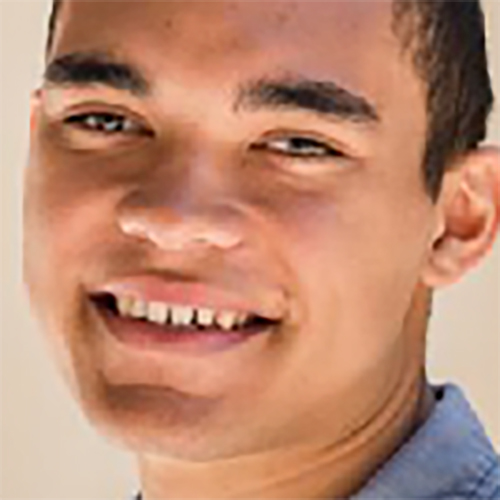 |
Jeremy Cowham ’20Computer Science and Engineering Advisor: Apurba Sakti, Research Scientist, MIT Energy InitiativeDirect Supervisor: Emre Gençer, Research Scientist, MIT Energy InitiativeSponsor: Alfred Thomas Guertin ’60 Energy Storage Technology Assessment Tool (ESTAT): Web development The purpose of this project was to develop a web tool, ESTAT, for projecting the costs and technical specifications of energy storage systems by modeling the manufacturing processes of those systems. Using existing calculations developed by Dr. Apurba Sakti, I was responsible for the web development of the tool: choosing a web framework (Django), transferring the calculations into code (Python), and developing the front-end user interface and website. ESTAT provides users—scientists, investors, engineers, etc.—insight into the most critical components of energy storage systems in terms of cost; technical specifications for systems, such as capacity, power, and energy; and comparisons between different technologies, among other features. From this project, I learned a lot not only about web development, but also about energy storage. |
 |
Anj Fayemi ’20Chemical Engineering Advisor: Jean-François Hamel, Research Scientist, Chemical EngineeringDirect Supervisor: Anita Wo, Graduate Student, Chemical EngineeringSponsor: Shell International Directed evolution of pseudomonas putida to increase its performance in bioremediation and polluted environments I explored directed evolution of the bacterial strain pseudomonas putida using novel concepts of biotechnology to make it more effective in degrading and metabolizing toxic organics in the environment. I designed and processed high-throughput cultures and conducted the continuous culture method of auxostat operation using a bioreactor fermentation for over six weeks. I have yet to sequence the 16s RNA gene of the bacteria to know for sure if they evolved, but I was able to use high performance liquid chromatography (HPLC) to correctly assay and quantify sodium benzoate in my samples. The measurement of sodium benzoate and the trends observed can also give hints as to the evolution of the bacteria. Experiment design and lab procedures gave me my first wet lab experience and taught me skills, including sterile techniques, UV-Vis spectroscopy, optical microscopy, and HPLC. |
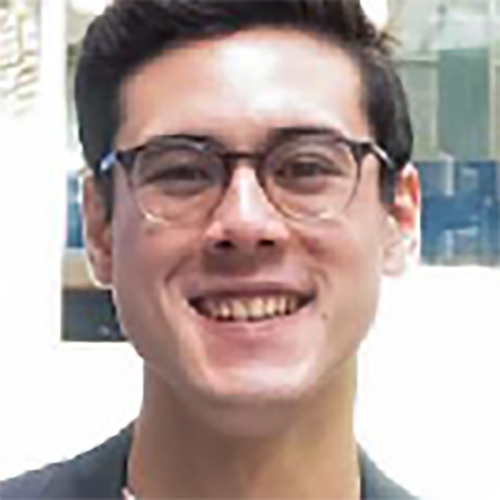 |
Liam Daniel Fenlon ’20Management Advisor and Direct Supervisor: John Reilly, Senior Lecturer, Sloan School of Management; and Jennifer Morris, Research Scientist, Joint Program on the Science and Policy of Global ChangeSponsor: Jerome I. ’51 ScD ’56 and Linda Elkind Uncertainty and the cost of energy technologies When policymakers, utilities, and energy companies make decisions about energy, there are several major uncertainties to consider. These include changes in world markets, policies, technologies, and the climate, all of which can affect investment payoff. My research team colleagues have built models to determine the electricity investments that would place the investor in the best position, by identifying the most robust options to potential risks. My projects specifically involved integrating levelized cost of electricity (LCOE) calculations into emissions prediction and policy analysis models used by the Joint Program. LCOE is one such input parameter that can impact emissions levels, energy mix, carbon prices, and policy costs. I also wrote Python code to visualize the results of large Monte Carlo simulations based on the models. I have wanted to pursue a career in energy since high school, and my time at the Joint Program was invaluable exposure to energy markets and policy. |
 |
Megan Flynn ’21Mechanical Engineering Advisor: Evelyn Wang, Professor, Mechanical EngineeringDirect Supervisor: Daniel Preston, Graduate Student, Mechanical EngineeringSponsor: Friends of MITEI UROP Improving fume hood energy usage At the Lab Energy Assessment Center, I analyzed energy data from MIT labs to make recommendations on how to best reduce energy usage with technical equipment. We presented our findings to several labs and were able to provide solutions to the issues we addressed. I also worked on designing an alarm/monitoring device that could be incorporated into fume hoods to cut down on unnecessary energy loss. We fabricated different degrees of signaling systems and designed an experiment to test the effectiveness of our methods in keeping the fume hood closed when not in use. After participating in this UROP, I feel more confident with my prototyping and rapid problem solving skills. I was able to make an immediate difference at labs on campus and gained experience with presentations and public speaking. |
 |
Kebar Geleta ’20Environmental Engineering Advisor: John Lienhard, Director, Abdul Latif Jameel Water and Food Systems Lab; and Abdul Latif Jameel Professor of Water and FoodDirect Supervisor: Kishor Nayar, Postdoctoral Associate, Mechanical EngineeringSponsor: Shell International Experiments on monovalent selective electrodialysis (MSED) characterizing separation of monovalent and divalent ions in agricultural waters, seawater, and lithium brines The purpose of the lab I worked in was to further research into monovalent selective electrodialysis (MSED) for a variety of applications. The applications of MSED range from creating zero discharge seawater desalination to agricultural water treatment. Our goals were to optimize the efficiency of the Ion Selective Electrodialysis (ISED), the machine that performs the MSED process. I investigated the available ion-specific electrode sensors in the market for the lab to use and determined which would most appropriately match with our purpose. Then, I tested how well the chosen sensor worked with the MSED experimental setup to separate chloride and sulfate ions. This project has sparked my interest in having a positive impact on the environment. The chemistry behind all of the work is very interesting to me and I look forward to reading about it during my search of literature. |
 |
Claire Halloran ’20Materials Science and Engineering Advisor: Jennifer Rupp, Assistant Professor, Materials Science and EngineeringDirect Supervisor: Alfonso Carrillo, Postdoctoral Associate, Electrochemical Materials LaboratorySponsor: Lisa Doh Himawan ’88 Investigating catalytic mechanisms of cerium oxide for solar-to-fuel conversion I researched reaction mechanisms for cerium oxide catalysts to enable the use of concentrated solar power to convert carbon dioxide and water into energy-dense renewable fuels. I fabricated cerium oxide catalysts with various dopants in different concentrations and performed in-situ Raman spectroscopy. This technique uses a laser to probe local bonds between atoms as the catalytic reaction occurs, allowing me to understand the reaction mechanism for catalysts with various dopants. Understanding how dopants alter the reaction mechanism will allow us to select a dopant and dopant concentration that can optimize fuel production in solar-to-fuel cells. I’m continuing research on this project and currently analyzing the results of my experiments. This project led to a presentation at the Materials Research Society Fall Meeting in Boston in November 2018. |
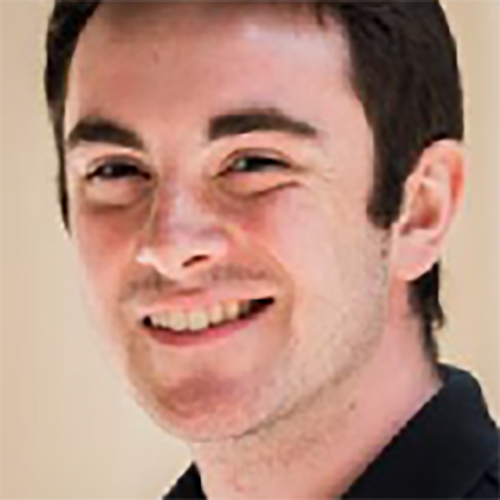 |
Luke Hartnett ’20Mechanical Engineering Advisor: Emmanuel Kasseris, Research Scientist, Mechanical EngineeringDirect Supervisor: Yu Chen, Postdoctoral Associate, Mechanical EngineeringSponsor: Shell International A modified internal combustion engine to eliminate producer gas treatment and greatly reduce the cost of biomass to power My UROP aimed to make biomass gasification cheaper. Biomass gasifiers burn solid organic matter and produce synthesis gas that can be used to generate electricity. Some of that gas condenses on the gasifier and forms tar. In order to remove that tar, an expensive cleanup apparatus is needed. I worked on methods to eliminate the need for this cleanup apparatus by sending the gas from the gasifier into an internal combustion engine, where the gas is combusted to prevent tar formation. Through hands-on tool work, I helped alter the air and synthesis gas pipeline that connected to the intake valve of the engine. I learned a lot about how research can be slow, and how often you are asked to problem solve for unexpected issues along the way. |
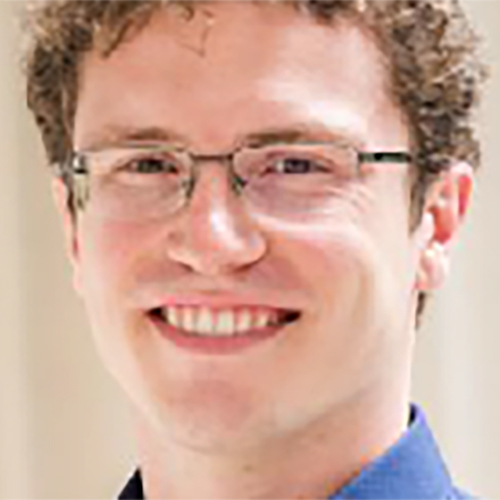 |
Jesse Hinricher ’19Chemical Engineering Advisor: Fikile Brushett, Associate Professor, Chemical EngineeringDirect Supervisor: Thomas Carney, Graduate Student, Materials Science and EngineeringSponsor: Lisa Doh Himawan ’88 Thermogalvanic flow cell for waste heat recovery The United States consumed 97.7 quadrillion BTUs of energy in 2017, of which 68% was rejected as waste heat. Conventional thermoelectric generators use solid-state inorganic components, which have coupled ion and thermal conductivities ultimately limiting device performance. My project was focused on developing an alternative thermogalvanic generator based on electroactive organic molecules and redox flow battery (RFB) architectures. This approach offers the opportunity to decouple ion and thermal conductivity while maintaining durability, safety, and scalability. To this end, I developed a novel thermogalvanic device and worked to characterize its performance. I examined well-understood chemistries and extended the prototype to include organic molecules. I enjoyed working with new technologies and expanding the scope of my project. My UROP furthered my understanding of electrochemistry and my goal of going to graduate school to research batteries. |
 |
Mariya Layurova ’18Chemical Engineering Advisor: Tonio Buonassisi, Associate Professor, Mechanical EngineeringDirect Supervisor: Juan-Pablo Correa-Baena, Postdoctoral Associate, Photovoltaics Research LaboratorySponsor: Lisa Doh Himawan ’88 Development of perovskite solar cells Perovskite materials offer promising low-cost photovoltaic devices, but most of them contain toxic lead. The goal of this project was to screen non-lead perovskite materials to determine potential alternatives for the perovskite solar cells. During the IAP, my group and I focused our work on the development of new perovskite structures. Newly developed materials were then analyzed for their optoelectronic properties and device performance. During this project, I have learned not only how to fabricate solar cells, but also how the processes are developed and perfected over time. I also continued to develop my measurement and analysis skills with quantum efficiency and UV-Vis measurements. I would love to thank MIT Energy Initiative for supporting me through this journey through the world of photovoltaics since the summer of 2017. |
 |
Cole Legg ’20Mechanical Engineering Advisor: Ahmed Ghoniem, Professor, Mechanical EngineeringDirect Supervisor: Kevin Kung, Graduate Student, Mechanical Engineering Sponsor: Shell International Reducing manufacturing complexity for torrefaction reactor My goal was to assess the assembly process of the torrefaction reactor. The assembly of the current reactor was time-consuming and took multiple people to perform. I looked at reducing the cost of this process by scaling the model and 3D printing its parts. From there I assembled 3D printed parts and assessed the time-consuming portions of the assembly. I then refined and reiterated based on what I had learned. In the end, I identified multiple points where access to fasteners slowed down and critical points where the model experienced fracture. I also assisted my lab with the development of the electrical components of the reactor. The reactor will hopefully serve as a source of sustainable energy in developing countries by converting agricultural waste into a cleaner-burning, energy-dense feedstock. Throughout the summer, I learned valuable skills in my field and many professional skills through MITEI. |
 |
Cynthia Lo ’18Materials Science and Engineering Advisor: Julia Ortony, Professor, Materials Science and EngineeringDirect Supervisor: William Lindemann, Graduate Student, Materials Science and EngineeringSponsor: ExxonMobil Geometric and optical characterization of self-assembled fluorophores The development of soft matter and “self-assembling” molecules mark the era of a new type of material: “programmable” materials capable of performing a function by their own intrinsic properties. Over the summer, I synthesized fluorescent self-assembling molecules and used various characterization techniques to understand how they work. Organic optical materials are important because they are widely applicable, and my UV-sensitive molecules can be used in a variety of contexts, such as identifying optimal places for solar panels and optically measuring changes in aqueous environments for environmental monitoring. Now, we have five different molecules, similar except for their size, and we want to find out what kind of structures they form and how they interact with larger, “host” molecules, to determine the best application for them. This work challenged me to think creatively to resolve unexpected setbacks, and has helped me to grow as a researcher and person. |
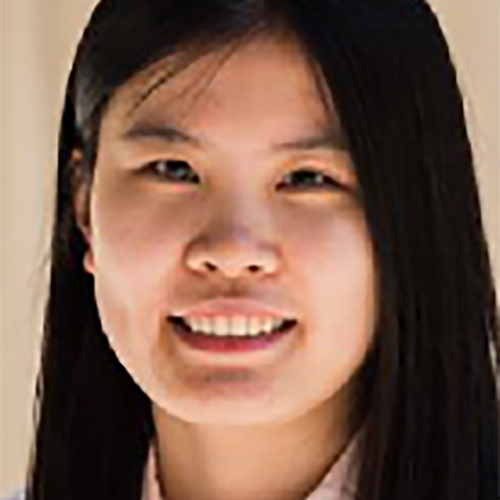 |
Erica Ma ’19Mathematics Advisor: Tonio Buonassisi, Associate Professor, Mechanical EngineeringDirect Supervisor: Ian Mathews, Postdoctoral Associate, Photovoltaics Research LaboratorySponsor: Shell International Cost analysis for commercializing new photovoltaic materials I focused on developing a cost model for a perovskite solar cell product built in factories of different scales to assist in figuring out what would be the best way to commercialize this novel photovoltaic material. After quantifying the potential growth of the photovoltaics market, I created a model to analyze the cost of manufacturing perovskite modules in three factory sizes by adjusting the appropriate parameters. Based on our projection of manufacturing cost in 2022, all the production costs are competitive enough. Alternative markets would be worth considering when launching new photovoltaic materials and products. While working on this project, I’ve enjoyed the opportunity to apply my skills to energy-related research. When modeling for a real-life problem, I started to think about and examine the considerations usually neglected or assumed to be true to improve our model in different scales and markets. |
 |
David MacKay ’21Mechanical Engineering Advisor: Jean-François Hamel, Lecturer, Chemical Engineering Maximizing biomass production in S. cerevisiae fed on industrial byproducts I was trying to find a way to produce ethanol using glycerol (an industrial waste-product) as a substrate. I worked on cell culture in a biosafety cabinet and monitored yeast growth and ethanol production using a BioLector. We found that a 50:50 mixture of glucose and glycerol produced the best results for yeast growth. Through this experience, I learned proper lab conduct and picked up the skills to perform high-performance liquid chromatography, wet cell culture, and cell analysis. |
 |
Kaitlyn Mullin ’19Materials Science and Engineering Advisor: Jennifer Rupp, Assistant Professor, Materials Science and EngineeringDirect Supervisor: Juan Carlos Gonzalez Rosillo, Postdoctoral Associate, Electrochemical Materials LaboratorySponsor: John C. Hardwick ’92 Functionalizing multiresistive elements in the context of memristive information storage logics My research focused on memristors, which provide an advanced type of information storage that most similarly mimics neuromorphic computing, or the processing that occurs throughout the human nervous system. The idea is that neuromorphic computing is much more streamlined than the transistor systems utilized today, therefore requiring much less energy input. The implementation of this design on a wide scale would reduce the energy required for information computation and transfer, and serve as long-term, non-volatile storage, which would reduce energy costs and waste. I helped to synthesize lithium oxides through varied processing to determine the optimal fabrication process for the electrode, as well as characterize critical material properties. I’ve loved getting to learn an incredible amount about electronic materials, especially coupling that with my interest in technologies that reduce energy impact. My work has made me interested in pursuing a graduate career in electronic materials. |
 |
Philip Murzynowski ’21Electrical Engineering and Computer Science Advisor: A. John Hart, Associate Professor, Mechanical EngineeringDirect Supervisor: Crystal Owens, Graduate Student, Direct write printing of carbon nanotube conductors My research this summer focused on developing conductive wires using carbon nanotubes (CNT). Electronics take up a surprisingly large portion of a vehicle’s capacity, in terms of both weight and space, and CNT-based electronics can potentially reduce the weight and space required by electronics systems. This reduction can increase the overall efficiency of the vehicle or machine due to their high specific conductivity and flexibility. My work was divided into two main components: continuing the characterization and development of a 3D printer to print CNT electronics, and researching methods of CNT alignment. We successfully developed a method for printing CNTs, and with additional processing methods to increase the conductivity of the printed CNTs, the system could lead to the development of energetically efficient, lightweight, and flexible electronics. I believe gaining exposure to research outside of my major was a great interdisciplinary experience and great way to broaden my perspective. |
 |
Elaine Ng ’21Physics Advisor and Direct Supervisor: Vladimir Bulović, Fariborz Maseeh (1990) Chair in Emerging Technology, Electrical Engineering and Computer Science; and Director, MIT.nanoSponsor: Friends of MITEI UROP Lightweight silicon photovoltaics Solar Photovoltaic (PV) Technology is the fastest-growing energy technology today due to the rapid reduction in the prices of PV modules and the associated reduction in prices of deployed PV systems. However, although PV module prices have dropped fast—over 85% in the last 6 years—non-module costs of PV deployment remain high. For example, balance-of-system (BOS) components—including installation labor, hardware, marketing, financing, and regulatory requirements—make up over 50% of the total PV system cost today. This project aimed to develop technical solutions that could reduce BOS costs of PV installation by demonstrating an efficient solar PV mini-module (15cm x 15cm in size) that weighs significantly less than today’s state-of-the-art systems that produce the same amount of power. I worked on creating these arrays by wiring Si cells on different flexible, lightweight substrates, such as plastic and fabrics. I also measured the durability of these different lightweight cells against mechanical stress and assessed their efficiencies. |
 |
Veronica Ripper ’20Computer Science, Economics, and Data Science Advisor: Francis O’Sullivan, Director of Research, MIT Energy InitiativeDirect Supervisor: Justin Montgomery, Graduate Student, Civil and Environmental EngineeringSponsor: Chevron Machine learning for unconventional oil and gas exploration and production In order to plan for future wells in the oil and gas industry, it is important to be able to accurately predict where they will be most productive. It is still uncertain exactly how much of increased production is due to technological advances and how much is due to spatial variability. During my UROP, I was working to improve the regression-kriging model for oil well production. After adding different spatial variables to the model and analyzing the changes in accuracy, I came to the conclusion that these additional variables did not significantly help the model. This means that the regression-kriging model is able to account for much of this spatial variability on its own. During my project, I gained more experience working with data in R and Python, and enjoyed learning more about the energy industry. |
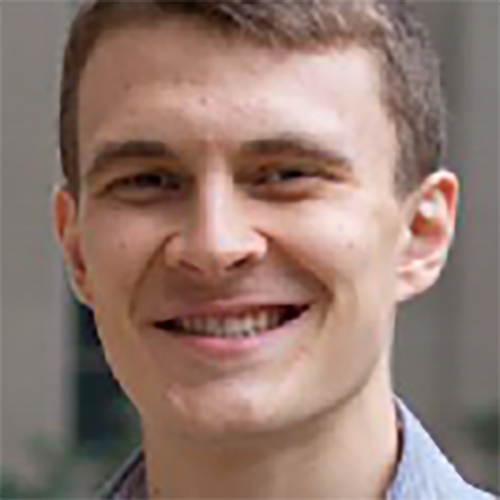 |
Ryan Sander ’20Electrical Engineering and Computer Science Advisor: Tonio Buonassisi, Associate Professor, Mechanical Engineering Direct Supervisor: Mallory Jensen, Graduate Student, Mechanical EngineeringSponsor: Philip Rettger ’80 Investigating light and elevated temperature-induced degradation (LeTID) and passivated emitter rear contacted (PERC) solar cells through occupation probability modeling I worked with the MIT Photovoltaics Lab to model occupation probability in solar cells in order to better understand their degradation behavior to develop more efficient cells. Occupation probability is the probability of a wafer defect occupying a given energy level within a semiconductor structure, and is an important analytical metric for determining the root cause(s) of different defects in solar cells. My work in the lab focused on developing iterative occupation probability algorithms in MATLAB, conducting solar wafer degradation tests, and using Python and solar lifetime measurement equipment to generate automatic wafer lifetime tests. Our research experimentally validated the predictions made by LeTID theory. Through this UROP, I have gained valuable skills in MATLAB, Python, solar wafer testing, and semiconductor physics. Thank you MIT PV Lab for a wonderful semester! |
 |
José Soto Rivera ’20Electrical Engineering Advisor: Robert Stoner, Deputy Director of Science and Technology, MIT Energy Initiative; and Director, Tata Center for Technology and DesignDirect Supervisor: Pablo Duenas, Postdoctoral Associate, MIT Energy InitiativeSponsor: ExxonMobil Rethinking Puerto Rico’s electrical grid Over the past few months, I have been unearthing the history of Puerto Rico’s electricity grid and trying to figure out ways to increase its resilience. In order to do this, I had to meet with a great number of professors, legislators, and grid operators from Puerto Rico in order to build up a comprehensive report. After the report was finished, I started creating a model for what Puerto Rico’s electric grid should look like based on expert opinions. Currently, I am working on distilling some final recommendations through the Rural Electrification Model that the MIT Energy Initiative developed. |
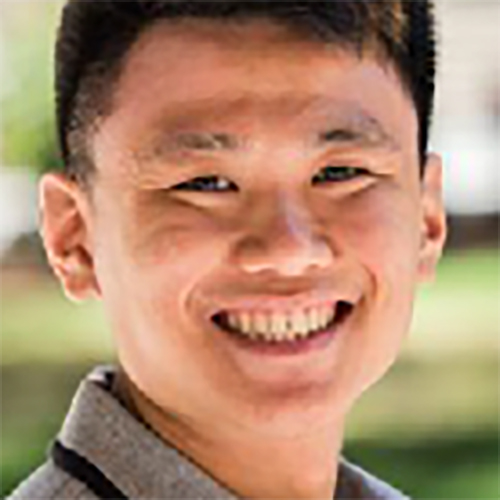 |
Jimmy Tran ’21Mechanical Engineering Advisor: Emmanuel Kasseris, Research Scientist, Mechanical EngineeringDirect Supervisor: Yu Chen, Postdoctoral Associate, Mechanical EngineeringSponsor: Chevron Modified internal combustion engine to reduce the cost of biomass gasification Biomass serves as a large producer of energy in developing countries. However, gasification systems, which are used to burn biomass to create producer gas that can be used as an energy source, can be very expensive because of the cleaning systems in place. My UROP focused on finding alternatives to the cleaning systems to remove impurities and tar found in the biomass when creating producer gas. By heating the producer gas to a high temperature, the impurities and tar can never condense. When in its gaseous form, we can burn off the impurities and tar without the need to clean any tar that might form in the engine. Our experiments have not yet produced any conclusive results, but I have learned a lot about the research process of a mechanical engineer. After getting my hands dirty working on the gasifier and internal combustion engine, and doing a few calculations, I have a better idea of what research is like for mechanical engineers. |
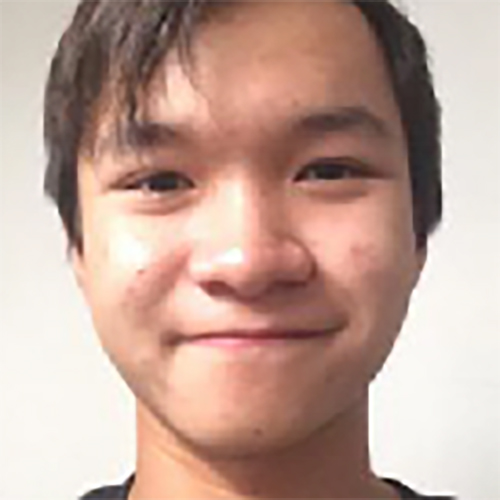 |
Sunny Tran ’21Electrical Engineering and Computer Science Advisor: Evelyn Wang, Professor, Mechanical EngineeringDirect Supervisor: Daniel Preston, Graduate Student, Mechanical EngineeringSponsor: Friends of MITEI UROP Reducing the energy consumption of fume hoods through the use of an audible signal MIT is well known for their numerous laboratories. However, some labs are not energy efficient. Fume hoods in laboratories expend a large amount of energy when their sash has been left open. My work involved reducing wasted energy by decreasing the amount of time fume hoods are left open and unattended. In order to accomplish this, I created an Arduino device, which monitors the amount of time a fume hood is left alone and open before alerting laboratory researchers in the form of an alarm. Improving upon this design, I was able to miniaturize the processor to an ATtiny microchip, which led to a reduction in energy consumption, cost, and footprint of the overall device. Currently, these devices are being used in a handful of labs across campus. |
 |
Hilary Vogelbaum ’20Materials Science and Engineering Advisor: Francis O’Sullivan, Director of Research, MIT Energy InitiativeDirect Supervisor: Emre Gençer, Research Scientist, MIT Energy InitiativeSponsor: John C. Hardwick ’92 Analysis of carbon capture, utilization, and storage (CCUS) value chain for a lower emission future Carbon capture, utilization, and storage (CCUS) is a technology vital in achieving lower carbon emissions from burning fossil fuels. Despite the technological maturity of CCUS, its high economic cost has prevented its widespread adoption. In this UROP, I first investigated the projected percentage of CCUS in the primary energy supply. I found that to create a scenario that avoids catastrophic climate change, CCUS usage must grow at a much faster rate than it does currently. To understand why CCUS integration has not progressed, I created a program to analyze a CCUS publication database for certain keywords. This analysis revealed that the number of publications relating to certain keywords has recently declined, revealing less new research when more is required. Through my work, I learned the importance of factors including economics and policy in hindering the deployment of critical technology. I hope to raise awareness in the future about the importance of employing technologies such as CCUS. |
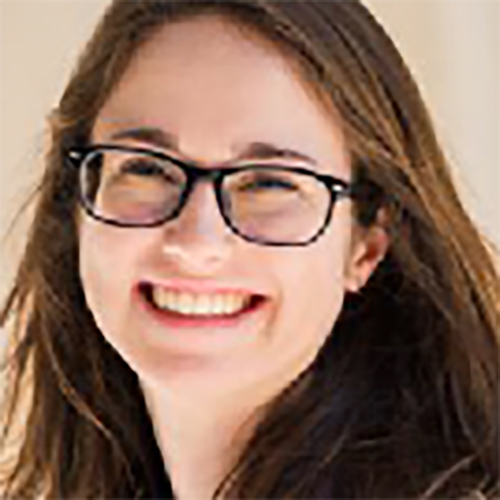 |
Julia Wainwright ’19Chemical Physics, Wellesley College Advisor: T. Alan Hatton, Ralph Landau Professor, Chemical EngineeringDirect Supervisor: Katherine Phillips, Postdoctoral Associate, Chemical EngineeringSponsor: ExxonMobil Electrochemically-mediated carbon capture materials One method for carbon capture currently studied involves the use of quinones, a class of organic compounds whose binding affinity for carbon dioxide changes depending on their oxidation state. My project aims to use a commercial inkjet printer to create electrodes that can be utilized in this quinone-based, electrochemically-mediated carbon capture process. My main focus for the summer was inkjet printing silver nanoparticles. I was successfully able to print traces that could be used as the electrodes in electrochemical tests, thereby concluding that inkjet printed silver nanoparticles will work as the conductive base layer in our electrodes. While working on this project, I not only learned about inkjet printing nanomaterials and different types of carbon capture, I also became more comfortable designing, implementing, and troubleshooting experiments. Those are skills that I look forward to utilizing while continuing this research project during the semester. |
 |
Taimor Williams ’21Mechanical Engineering Advisor: Amy Glasmeier, Professor, Economic Geography and Regional PlanningDirect Supervisor: Darien Williams, Graduate Student, Urban Studies and PlanningSponsor: ExxonMobil Developing a protocol to mince reports of grid failure into workable parts The late 20th and early 21st centuries were plagued with multiple high-level failures within the electrical grid. From the Northeast blackout in 1965 and 2003 to the Southwest blackout in 2011, these high-level disturbances caused massive disruptions to the societal infrastructure netting millions in damages to the economy and exposing the fragility of the energy grid. This past summer, I examined the academic literature surrounding these failures in order to create a protocol that systematically transforms the abstract literature into workable data. Currently, we have found that the failures within the electric grid system are multi-faceted. We are now focusing on the role of gas markets in these events. This work has helped me gain a greater appreciation for the infrastructure which runs our society and the inherent vulnerability of high-dependency systems. |